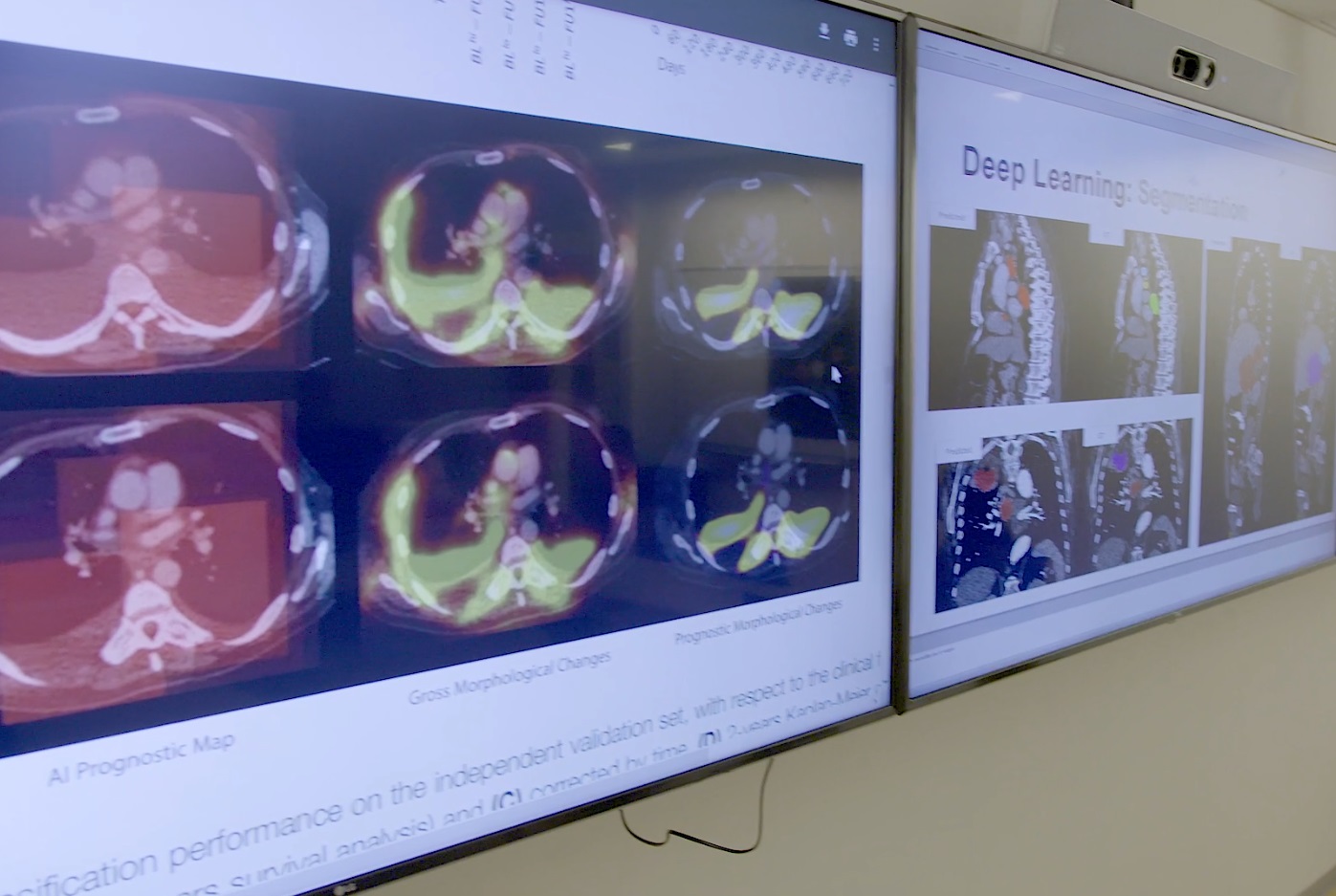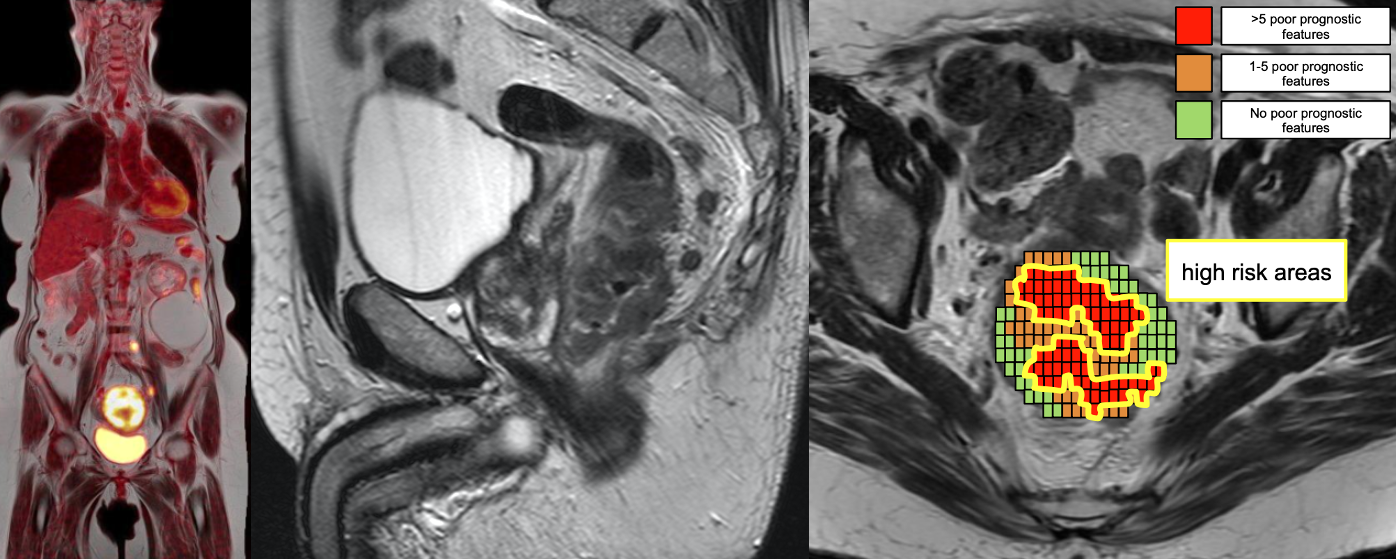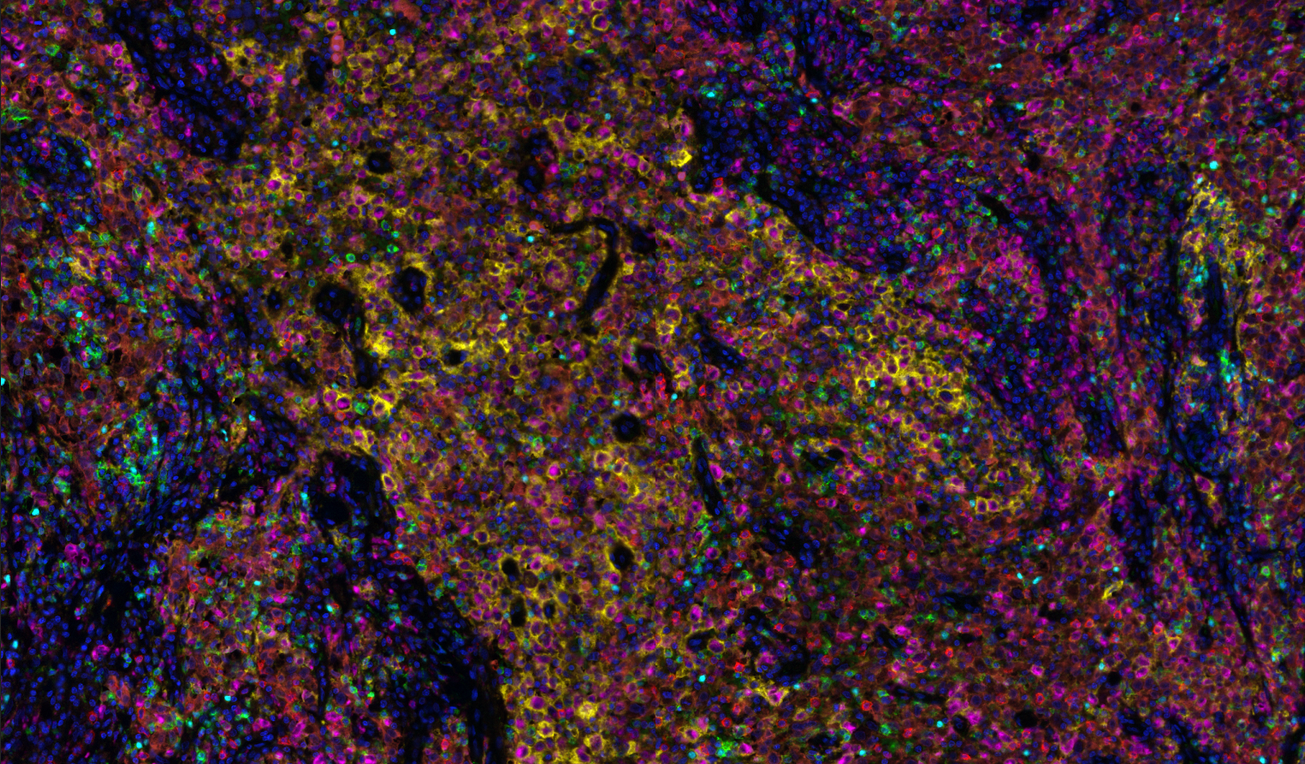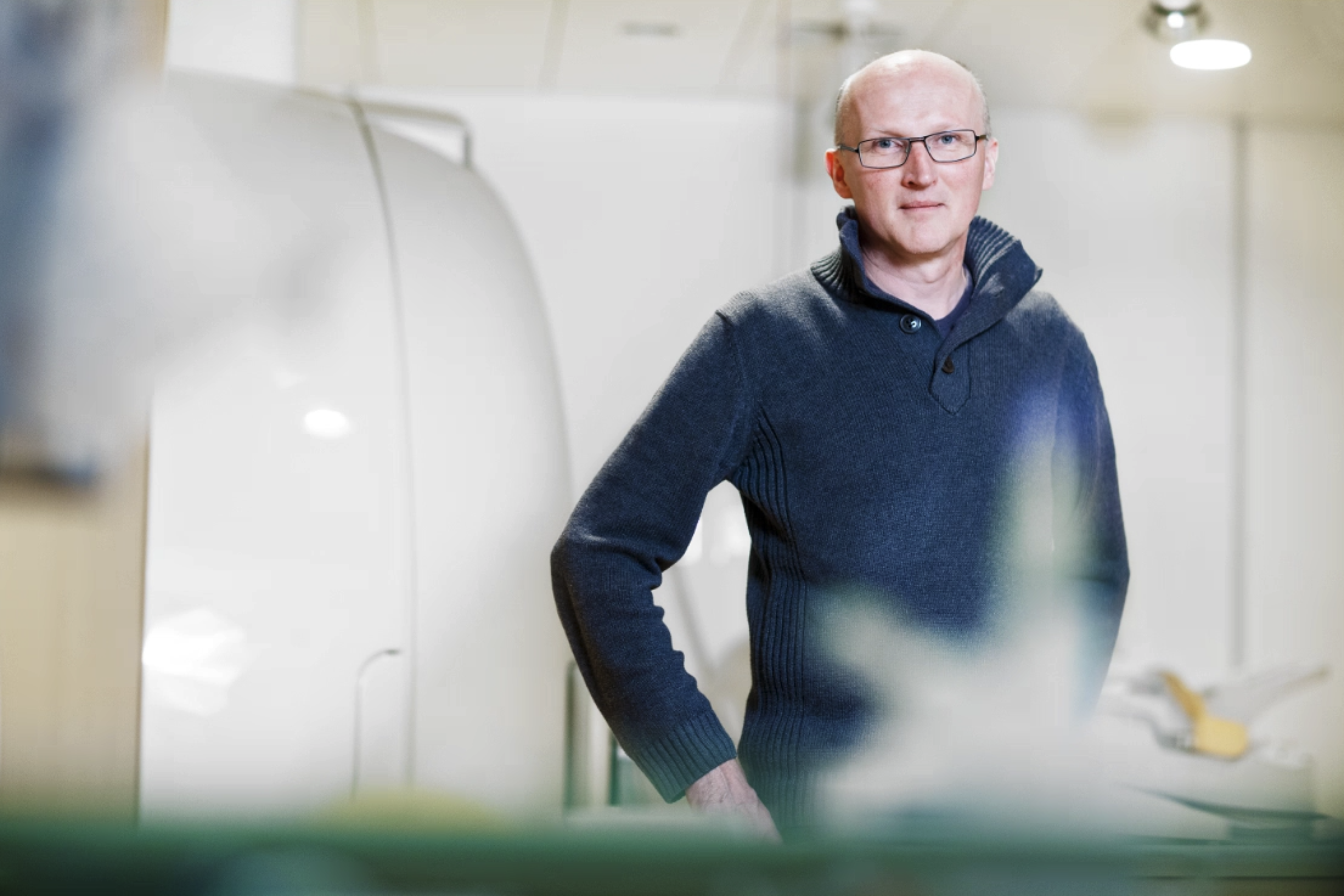How can we use (bio)medical images to measure and predict whether therapies are effective?
Medical imaging contains a multitude of infrmation that can increase the accuracy of treatments and help further perzonalize them. Compared to a biopsy, a scan can analyze and visualize much more of the body at once. By filtering out the correct, relevant information from these scans at a large scale, analyze it and combine it with data on treatment results, researchers can find new connections between treatments and results for patients. This will help physicians to keep a better eye on what happens in the body during treatment, and will provide greater insight on the efficacy of treatment, or the results we can expect.
Example project





